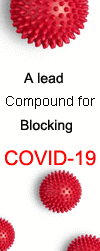The aim of this study was to investigate if armepavine (Arm, C₁₉H₂₃O₃N) could exert inhibitory effects against hepatic fibrosis in rats.
METHODS AND RESULTS:
A cell line of rat hepatic stellate cells (HSC-T6) was stimulated with tumour necrosis factor-α (TNF-α) to evaluate the inhibitory effects of Arm. Rats were injected with thioacetamide (TAA; 300 mg/kg, intraperitoneally) thrice a week for 4 weeks to induce hepatic fibrosis, with Arm (3 or 10 mg/kg) given by gavage twice a day. Liver sections were taken for western blotting, fibrosis scoring and immunofluorescence staining. Arm (1-10 µm) concentration-dependently attenuated TNF-α-stimulated: (i) protein expressions of α-smooth muscle actin (α-SMA), collagen type I and angiopoietin-1; (ii) H₂O₂ production; and (iii) NF-κB, JunD and C/EBPß (cytidine-cytidine-adenosine-adenosine-thymidine (CCAAT)/enhancer binding protein-ß (EBPß)) nuclear translocations in HSC-T6 cells. In vivo Arm treatment significantly reduced plasma aspartate transaminase and alanine transaminase levels, hepatic α-SMA expression and collagen contents, and fibrosis scores of TAA-injected rats. Moreover, Arm treatment decreased α-SMA- and NF-κB-positive cells in immunohistochemical staining, and mRNA expression levels of IL-6, TGF-ß1, TIMP-1, col1α2, iNOS and ICAM-1 genes, but up-regulated the metallothionein gene in the livers of TAA-injected rats.
CONCLUSIONS:
Our results indicated that Arm exerted both in vitro and in vivo antifibrotic effects in rats, with inhibition of NF-κB, JunD and C/EBPß pathways. |

 Cell. 2018 Jan 11;172(1-2):249-261.e12. doi: 10.1016/j.cell.2017.12.019.IF=36.216(2019)
Cell. 2018 Jan 11;172(1-2):249-261.e12. doi: 10.1016/j.cell.2017.12.019.IF=36.216(2019) Cell Metab. 2020 Mar 3;31(3):534-548.e5. doi: 10.1016/j.cmet.2020.01.002.IF=22.415(2019)
Cell Metab. 2020 Mar 3;31(3):534-548.e5. doi: 10.1016/j.cmet.2020.01.002.IF=22.415(2019) Mol Cell. 2017 Nov 16;68(4):673-685.e6. doi: 10.1016/j.molcel.2017.10.022.IF=14.548(2019)
Mol Cell. 2017 Nov 16;68(4):673-685.e6. doi: 10.1016/j.molcel.2017.10.022.IF=14.548(2019)

